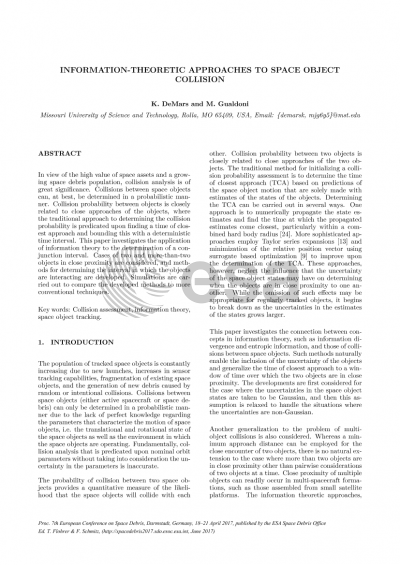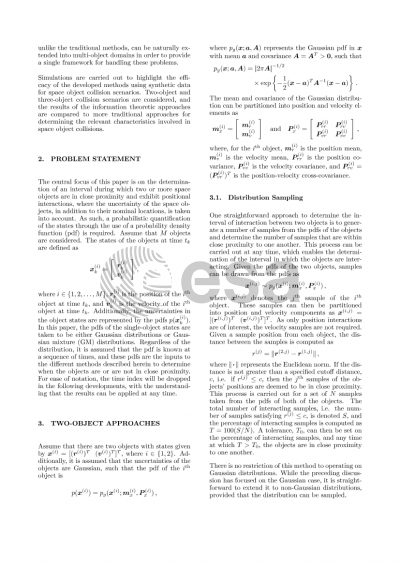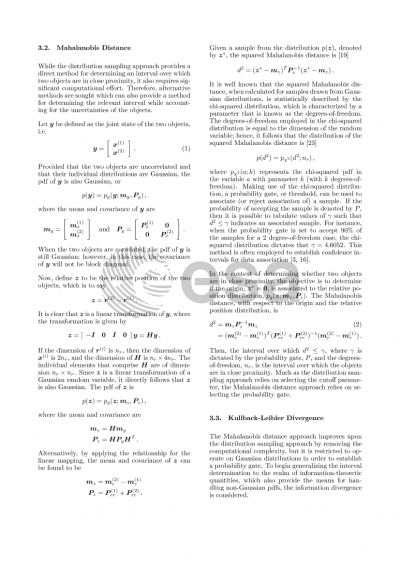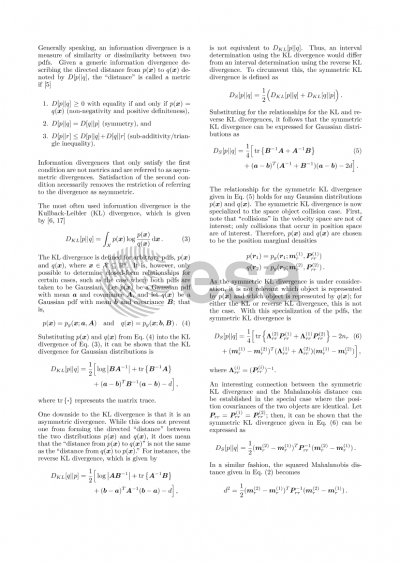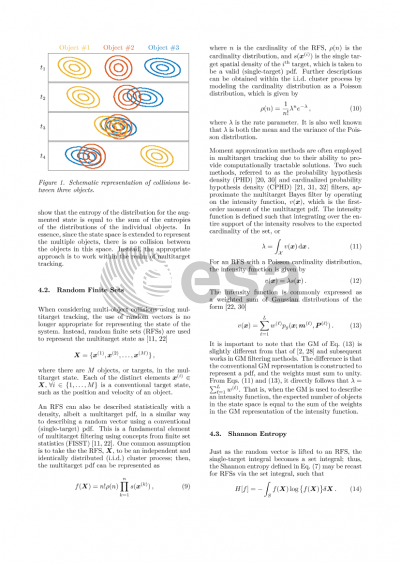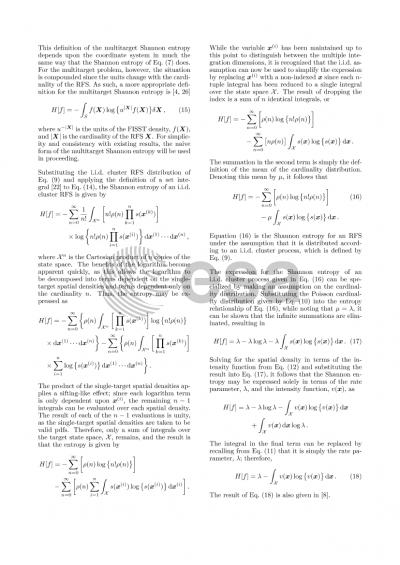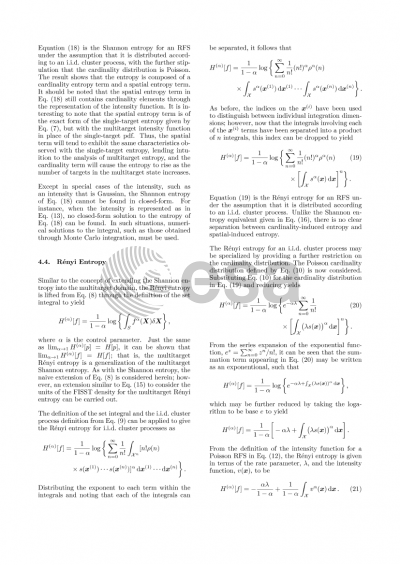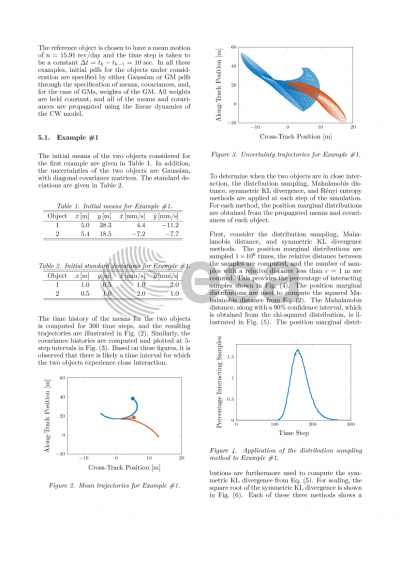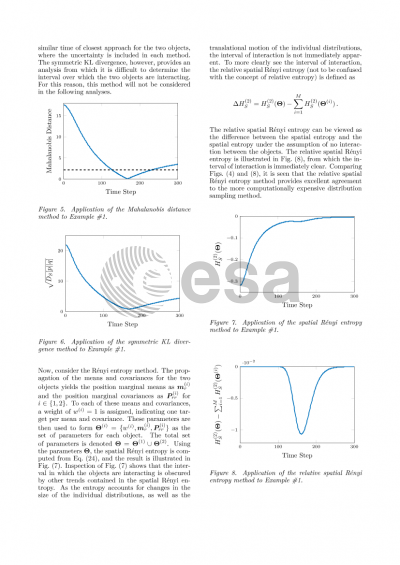Document details

Abstract
In view of the high value of space assets and a growing space debris population that is increasingly caused by random collisions in an already congested space environment, collision analysis if of great significance. Collisions between space objects (either active spacecraft or space debris) can, at best, be determined in a probabilistic manner due to the lack of perfect knowledge regarding the parameters that characterize the motion of space objects, i.e. the translational and rotational state of the space objects as well as the environment in which the space objects are operating. Fundamentally, collision analysis that is predicated upon nominal orbit parameters without taking into consideration the uncertainty in the parameters is inaccurate.
The probability of collision between two space objects provides a quantitative measure of the likelihood that the space objects will collide with each other. Collision probability between two objects is closely related to close approaches of the two objects. The traditional method for initializing a collision probability assessment is to determine the time of closest approach based on predictions of the space object motion that are solely made with estimates of the states of the objects. This approach completely neglects any effects that the uncertainty may have on determining when the objects are in close proximity to one another. While the omission of such effects may be appropriate for regularly tracked objects, it begins to break down as the uncertainties in the estimates of the states grows larger.
This paper investigates the connection between concepts in information theory, such as mutual information and entropic information, and those of collisions between space objects. In particular, the problem of determining a time of closest approach from an information theoretic perspective is considered. This technique generalizes the time of closest approach to a window of time over which the two objects are in close proximity. The developments are first considered for the case where the uncertainties in the space object states are taken to be Gaussian and then this assumption is relaxed to handle the more difficult non-Gaussian case.
Another generalization to the problem of multi-object collisions is also considered. Whereas a minimum approach distance can be employed for the close encounter of two objects, there is no natural extension to the case where more than two objects are in close proximity. This situation can readily occur in multi-spacecraft formations, such as those assembled from small satellite platforms. The information theoretic approaches, unlike the traditional methods, can be naturally extended into multi-object domains in order to provide a single framework for handling these problems.
Simulations are carried out to highlight the efficacy of the developed methods using synthetic data for space object collision scenarios. Two object and three object collision scenarios are considered, and the results of the information theoretic approaches are compared to the more traditional approaches for determining the relevant characteristics involved in space object collisions.
Preview
